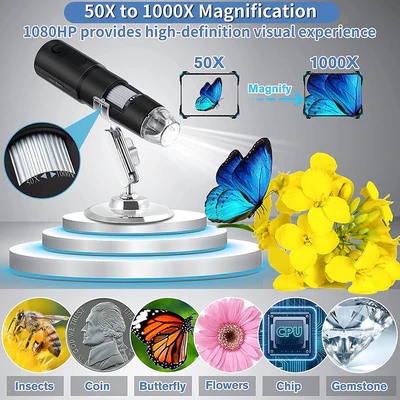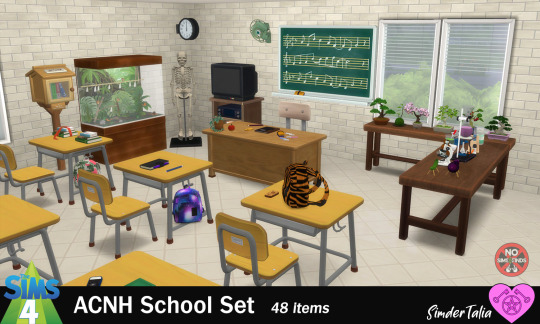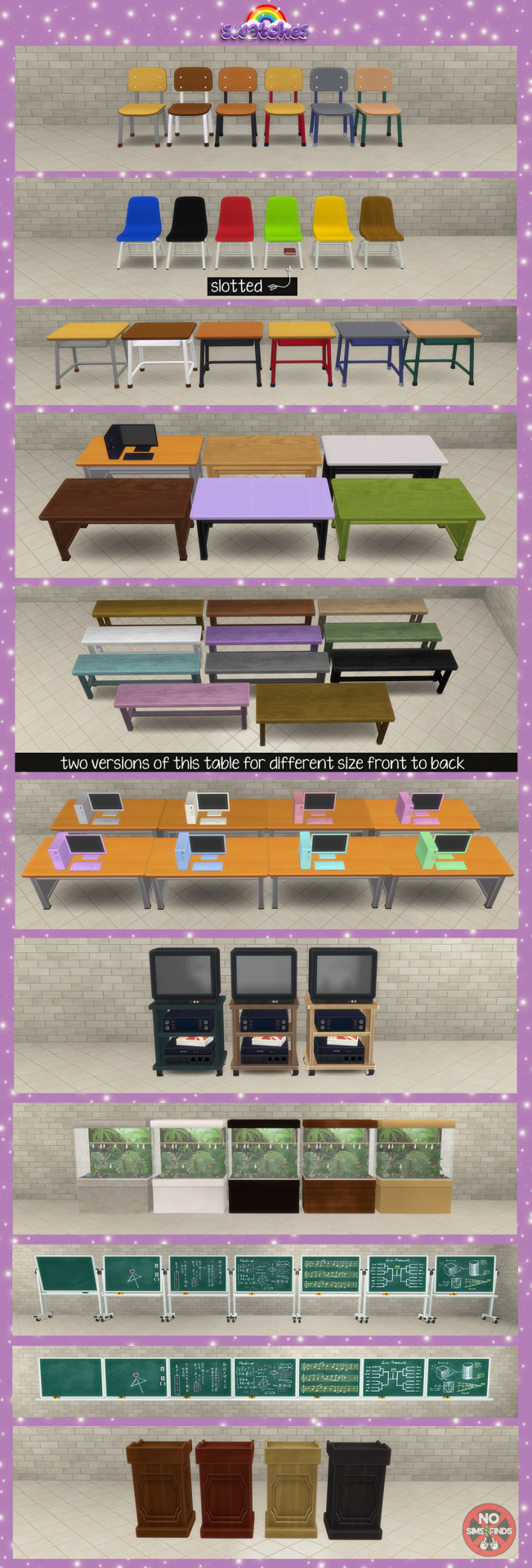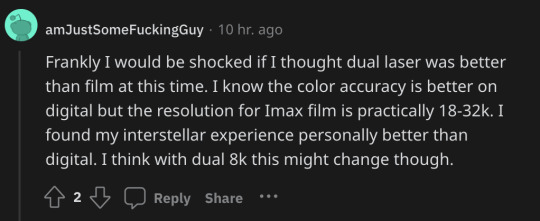#smartphone microscope
Text
The Revolution of the Smartphone Microscope
The smartphone microscope is transforming the way we explore and understand the microscopic world, blending the power of modern technology with the intricate wonders of the unseen. This innovative device is not just an upgrade in the realm of microscopy but a gateway for students, scientists, and enthusiasts to delve into the intricacies of life in unprecedented detail. Join us as we uncover the fascinating capabilities of smartphone microscopes, their applications across various fields, and how they are democratizing access to high-quality microscopy for everyone.
In the age of rapid technological advancement, the convergence of powerful smartphones and high-precision microscopy has given birth to an incredible innovation: the smartphone microscope. This compact, versatile device is changing the landscape of microscopic exploration, making it more accessible and user-friendly than ever before. Whether you’re a budding scientist, a curious student, or a professional researcher, the smartphone microscope offers a unique blend of convenience and capability that is revolutionizing the field.
A New Era of Accessibility
Traditional microscopes, while indispensable in many fields, come with limitations. They are often bulky, expensive, and confined to laboratory settings. The smartphone microscope, however, breaks these barriers, offering portability, affordability, and ease of use. With just a clip-on lens or a small attachment, your smartphone transforms into a powerful microscope, capable of magnifying objects up to 1000 times their original size. This means that anyone, anywhere, can explore the microscopic world, making science more inclusive and engaging.
Unleashing the Power of Smartphones
Modern smartphones are equipped with high-resolution cameras, sophisticated software, and powerful processors. When combined with a microscope attachment, these devices can capture stunningly detailed images and videos of microscopic specimens. Apps specifically designed for microscopy enhance this experience, providing features such as image enhancement, measurement tools, and even the ability to share findings in real-time with peers across the globe. This synergy between smartphone technology and microscopy opens up endless possibilities for discovery and collaboration.
Educational Transformation
In educational settings, the smartphone microscope is proving to be a game-changer. Traditional classroom microscopes are often limited in number, restricting hands-on experience for students. With smartphone microscopes, each student can have their own portable lab, making the learning process more interactive and engaging. Teachers can integrate digital microscopy into their lessons, allowing students to document and analyze their findings with ease. This not only enhances understanding but also ignites curiosity and passion for science at an early age.
Applications Across Various Fields
The applications of smartphone microscopes extend far beyond the classroom. In the field of biology, they enable researchers to conduct field studies with unprecedented convenience, capturing live specimens and analyzing them on the spot. Environmental scientists can monitor ecosystems, inspecting soil, water samples, and plant life in real-time. Medical professionals can use smartphone microscopes for preliminary diagnostics, offering a cost-effective solution in remote or underserved areas. The ability to instantly share findings with colleagues around the world also facilitates faster collaboration and innovation.
Citizen Science and Beyond
One of the most exciting aspects of the smartphone microscope is its potential to empower citizen scientists. Amateur researchers and enthusiasts can participate in scientific studies, contribute to data collection, and make valuable discoveries. Platforms dedicated to citizen science projects are integrating smartphone microscopy, allowing users to upload their observations and collaborate with professional scientists. This democratization of science fosters a sense of community and shared purpose, bringing together people from all walks of life to explore and protect our world.
Future Prospects
As technology continues to evolve, the capabilities of smartphone microscopes are expected to expand even further. Advances in lens technology, software development, and artificial intelligence will enhance image quality, provide more sophisticated analytical tools, and enable automated identification of specimens. The integration of augmented reality (AR) could offer immersive educational experiences, allowing users to interact with and learn about microscopic worlds in new and exciting ways.
Conclusion
The smartphone microscope is not just a technological novelty; it is a powerful tool that is transforming the way we interact with the microscopic world. By making high-quality microscopy accessible to a broader audience, it is fostering a new generation of curious minds and facilitating advancements in various scientific fields. Whether you are an educator, a researcher, or simply someone with a passion for discovery, the smartphone microscope opens up a universe of possibilities, inviting you to explore, learn, and contribute to the ever-expanding realm of science.
0 notes
Text

Our small friend (The Ant)
This is the face of an ant in macro shot form microscope. Beautiful and evil at same time!
#astronomy#nasa#astronomers#universe#astrophotography#nasa photos#nasawebb#astrophysics#microscope#macro photography#macrophilia#macro photos on smartphone#science facts#science#tumblr blog#tumblr#ants
54 notes
·
View notes
Text
Smartphone under a Microscope
Um aparelho smartphone, durante o dia, entra em contato com diversos ambientes, além de estar em contato direto com sua mão, que nem sempre está limpa. Henrique Giordani – tudocelular. 19 jan 2015
Smartphone under a Microscope. Rajinder Singh. Science girl – @gunsnrosesgirl3. 28 ago 2024
Estudantes da universidade Surrey, do Reino Unido, resolveram fazer um experimento para saber se os…

View On WordPress
#acrílico#agar nutrient rich substance#aluno pós-graduação Universidade Grinnell Estados Unidos#apetrechos loja de construção#arruelas porcas# limpar desinfetante#bactérias#celular limpeza#ciência mais acessível#engenhoca#Estudantes universidade Surrey Reino Unido#experimento smartphone#higienização#Kenji Yoshino#madeira#micropios microorganismos#microscópio digital#parafusos#petri dishes#Rajinder Singh#resultado chocante#Science girl @gunsnrosesgirl3#Simon Park professor responsável#Smartphone under a Microscope#todas semanas#usuários#young scientists
0 notes
Text
Explore the World Up Close with Our Digital Wireless Microscope for Smartphone

Experience the wonders of the microscopic world with our Digital Wireless Microscope for Smartphone. Designed for scientific exploration, educational discovery, and hobbyist enjoyment, this innovative tool offers crystal-clear imaging directly to your smartphone. Unlock the secrets of nature and delve into intricate details with unparalleled clarity and ease.
Revolutionize Your View with Magilens Digital Wireless Microscope for Smartphone
Unlock the hidden details of the world around you with Magilens's cutting-edge digital wireless microscope for smartphones. Whether you're a scientist, educator, or hobbyist, our innovative microscope offers unparalleled clarity and convenience, allowing you to capture and explore intricate details with ease.

Crystal Clear Imaging Anytime, Anywhere
Say goodbye to bulky traditional microscopes and hello to the future of microscopy. Our digital wireless microscope seamlessly connects to your smartphone, transforming it into a powerful tool for scientific discovery. With high-resolution imaging capabilities, you can capture stunning images and videos of specimens in real-time, right from the palm of your hand.

Versatile Applications for Every Enthusiast
From classroom lectures to outdoor adventures, our digital wireless microscope is designed to adapt to any environment. Whether you're examining biological samples, inspecting electronic components, or marveling at the intricacies of nature, our microscope delivers unparalleled performance and versatility. With adjustable magnification levels and built-in LED lighting, you can explore the world like never before.

Conclusion
Experience the future of microscopy with Magilens's digital wireless microscope for smartphones. With its unparalleled clarity, convenience, and versatility, it's the perfect tool for scientific research, educational exploration, and hobbyist enjoyment. Visit our website today to learn more and unlock a new world of discovery.
Read more: https://magilens.com/
0 notes
Text
#Luminous Protective Glass For iPhones#Luminous Screen Protector for iPhones#Magnification Microscope Lens for Smartphones#USB-C to USB-C Super Safety Fast Charging Cable#Clear Luxury Phone Case for Samsung
0 notes
Text










🍎 ACNH School Set ✏️
48 Now 49 items (I added a school bell for the wall) | Sims 4, Base game compatible.
As usual, all original swatches included with lots of extras added by me! ☺️💗 I'm very excited to share the Monarch butterfly Breeding Project, which I made myself. When I was in school we raised some Monarchs and released them when they emerged & matured, it was really cool AND I love to share items that also raise some kind of awareness on important issues when the inspiration strikes me. Saving the Monarch butterflies is definitely one of them! You can read about how to help them here.
Type “ACNH School” into the search query in build mode to find quickly. You can always find items like this, just begin typing the title and it will appear.
Always suggested: bb.objects ON, it makes placing items much easier. For further placement tweaking, check out the TOOL mod.
Use the scale up & down feature on your keyboard to make the items larger or smaller to your liking. If you have a non-US keyboard, it may be different keys depending on which alphabet it uses. (I used this to "hang" the backpacks from the hook on the side of the student desk in the preview image above, for instance. To put it at the correct height, raise the backback 2 times.)
I hope you enjoy!
Set contains:
-Apple | 1 swatch | 420 poly
-Backpack Decor | 6 swatches | 768 poly
-Bell | 6 swatches | 880 poly
-Blackboard Eraser | 3 swatches | 324 poly
-Blackboard - Wall | 7 swatches | 780 poly
-Blackboard - Wheels | 7 swatches | 2418 poly
-Bonsai Liberated 1-3 | 7,9 ,& 6 swatches | 846, 718, & 844 poly
-Bonsai - Moss | 4 swatches | 1277 poly
-Bonsai - Pine | 7 swatches | 1198 poly
-Bonsai - Sakura | 14 swatches | 1942 poly
-Bonsai Shelf - Decluttered | 10 swatches | 238 poly
-Bonsai Shelf - Bigger | 10 swatches | 238 poly
-Book | 10 swatches | 268 poly
-Books - Tied | 5 swatches | 1154 poly
-Books - No Strap | 5 swatches | 346 poly
-Cafeteria Salad Bar | 9 swatches | 2407 poly
-Chair | 6 swatches | 1226 poly
-Chair - Plastic (slotted) | 6 swatches | 1212 poly
-Chalk | 3 swatches | 98 poly
-Computer (functional) | 9 swatches | 742 poly
-Cucumber Horse | 1 swatch | 490 poly
-Digital Alarm Clock | 11 swatches | 962 poly
-Eggplant Cow | 1 swatch | 616 poly
-Gradebook | 1 swatch | 236 poly
-Lectern (slotted) | 4 swatches | 538 poly
-Metal Wall Fan | 8 swatches | 1108 poly
-Micro-Library | 6 swatches | 1172 poly
-Microscope | 3 swatches | 1226 poly
-Monarch Breeding Project | 5 swatches | 10907 poly
-Movie Day Cart (functional TV) | 3 swatches | 1024 poly
-Nurse's Cot (functions as a loveseat) | 5 swatches | 1150 poly
-Pencil | 3 swatches | 34 poly
-Planner | 4 swatches | 610 poly
-Principal's Bench | 2 swatches | 1980 poly
-Rescue Mannequin | 12 swatches | 2310 poly
-Science Set | 1 swatch | 2373 poly | Requires Cats & Dogs for animation
-Science Set (steam animation) | 1 swatch | 2373 poly
-Skeleton Display | 1 swatch | 1354 poly
-Smartphone V1 & V2 | 7 swatches each | 458 poly
-Student Desk | 6 swatches | 998 poly
-Tabletop Microphone | 1 swatch | 940 poly
-Teacher Desk | 6 swatches | 656 poly
-Teacher Plant | 8 swatches | 1164 poly
-Trophy Case | 6 swatches | 2401 poly
-Trophy Case - Decluttered & Slotted | 6 swatches | 142 poly
-Wall Clock | 10 swatches | 950 poly
📁 Download all or pick & choose
(SFS, No Ads): HERE
📁 Alt Mega Download (still no ads): HERE
📁 DL on Patreon
Will be public on September 29th, 2023
As always, please let me know if you have any issues! Happy Simming! 💗
✨ If you like my work, please consider supporting me
★ Patreon 🎉 ❤️ |★ Ko-Fi ☕️ ❤️
★ Instagram📷
Thank you for reblogging ❤️ ❤️ ❤️
@sssvitlanz @maxismatchccworld @mmoutfitters @coffee-cc-finds @itsjessicaccfinds @gamommypeach @stargazer-sims-finds @khelga68 @suricringe @vaporwavesims @mystictrance15 @public-ccfinds
#s4cc#ts4cc#sims 4 maxis match#sims 4 school#sims 4 desk#sims 4 chair#sims 4 furniture#sims 4 functional object#sims 4 object#sims 4 book#sims 4 books#sims 4 butterfly#sims 4 alchemy#sims 4 science#sims 4 plants#sims 4 bonsai#sims 4 apple#sims 4 shelf#sims 4 bench#sims 4 electronics#sims 4 phone#sims 4 tv#sims 4 sofa#sims 4 clock#sims 4 table#sims 4 backpack#sims 4 toddler#sims 4 child#sims 4 teens#sims 4 university
260 notes
·
View notes
Text

People keep saying that IMAX film is the equivalent to 18K (and now 32K???) and it is driving me nuts. Christopher Nolan is a huge bullshitter and I guess he is just trying to find reasons to keep the IMAX format alive, but saying his film is 18K is silly. We can't even see that much detail even on the biggest screen in the world.
But there is also no lens in the world that is sharp enough to resolve that much detail. They are only now making special 8K-ready lenses.
Film grain is microscopic. And to preserve that grain structure, film is scanned at very high resolutions. You might hear about film being scanned at 12K and so people think film is the equivalent to that resolution. But 35mm is actually fairly soft compared to modern digital cinema cameras. And you have to make the film twice as big to get a similar level of detail to today's high end digital cameras.
And again, the lens is the main bottleneck. If you don't have a sharp lens, it does not matter how many Ks or how big the film is.
Resolution is such a small variable of modern image quality. 4K is probably as much detail as we are ever going to see. But marketers have sold this more Ks = more gooder idea so much and now that is the only thing people know about image quality. The amount of colors, the dynamic range, the contrast... they are all much more noticeable.
But the true secret to image quality... lighting.
Good cinematography is by far the biggest aspect of image quality. Put a 1080p Spielberg movie up against an 8K smartphone recording at a kid's birthday party. Then ask people which looks better.
79 notes
·
View notes
Text
U Michigan did a press release too, this one talks a little bit more about my specific contributions, I even got to give a quote!
U-M study: Using 'tweezers' to control active fluids
reporting by Morgan Sherburne of U-M news
University of Michigan physicists have devised a way to manipulate active fluids, a type of fluid composed of individual units that can propel themselves independently, by taking advantage of topological defects in the fluids.
The researchers showed that they could use tweezers similar to optical tweezers—highly focused lasers that can be used to nudge around atoms and other microscopic and submicroscopic materials—to manipulate the fluids’ topological defects and control how these active fluids flow. The study, led by U-M physicist Suraj Shankar, is published in the Proceedings of the National Academy of Sciences.
You can think of an active fluid like a flock of birds, says Shankar. In a murmuration, an enormous cloud of starlings, birds will twist and turn in unison, making shapes of the cloud. But while the murmuration looks like it’s moving as one organism, the movement is made of individual birds powered by their individual sets of wings.
Similarly, active fluids are composed of individual components like bacteria in water or atoms in a crystal, but each unit moves on its own if shone with light or given “food” via a chemical reaction, according to Shankar. Researchers have previously engineered bacteria so that when they shine light on the bacteria, some bacteria in the liquid swim faster and others swim slower.
“And you can change that pattern as you want. By changing the speed at which the bacteria swim locally, you can paint faces of famous people, or change it and make a landscape,” said Shankar, an assistant professor of physics at U-M.
“Given that these experimental platforms exist and we’re now able to manipulate these materials by controlling the speed by which things are moving around, we asked: Can we develop a framework in which we can control the local speeds of things that comprise active fluids so that we can control them in a systematic way?”
The research team also includes co-authors Cristina Marchetti and Mark Bowick of the University of California Santa Barbara and Luca Scharrer, who conducted much of the research as an undergraduate at UCSB.
The team focused on a popular active fluid called a nematic fluid, composed of liquid crystals—the same kind of liquid crystals that comprise smartphone, tablet and computer displays. These liquid crystals are fluids composed of long molecules that can line up and become ordered like matches in a matchbox or timber logs stacking up and flowing down a river, Shankar says. But when driven by chemical reactions these nematic fluids become active and have the ability to pump fluid, which allows them to move around without externally applied forces or pressure gradients.
Shankar and colleagues used this characteristic feature and applied principles of symmetry, geometry and topology from mathematics to develop design principles that will allow the researchers to control the trajectory of individual crystals within the nematic fluids.
Their methods rely on differences in how these rod-like objects line up within the liquid. They may be misaligned at some points, which causes the liquid crystals to bend around the point of misalignment, like a whirlpool in a river. This creates different patterns in the fluid, similar to the ridges of your fingerprints, Shankar says. In liquid crystals, there are points where the line of crystals will bend over and look like a comet, or form a symbol that looks like the Mercedes logo.
If you add energy to the system and make the fluid active, these patterns, called topological defects, come alive.
“These patterns start moving and they drive and stir the fluid, almost as if they were actual particles,” Shankar said. “Controlling these individual patterns that are associated with the defects seems like a simpler job than to control each microscopic component in a fluid.”
The project began when Scharrer developed simulations to model active fluid flow and track the locations of topological defects, attempting to test a hypothesis posed by Shankar and Marchetti. Showing his simulation results to the other researchers, Scharrer and the team found how these complex responses could be mathematically explained and converted into design principles for defect control.
In the study, Scharrer created ways to create, move and braid topological patterns using what they call active topological tweezers. These tweezers can transport or manipulate these defects along space-time trajectories as if they were particles, by controlling the structure and extent of the regions where chemical activity drives fluid pumping.The resulting motion of the active fluid around the whirlpools of the topological defects enables their never-ending movement.
“I think this work is a beautiful example of how curiosity-driven research, compared to problem- or profit-driven work, can lead us in completely unexpected technological directions,” said Scharrer, now a doctoral student at the University of Chicago.
“We started this project because we were interested in the fundamental physics of topological defects, and accidentally stumbled into a new way to control active biological and bio-inspired fluids. If we’d had that end goal in mind from the beginning, who knows if we would have found anything at all.”
The researchers also demonstrate how simple activity patterns can control large collections of swirling defects that continually drive turbulent mixing flows.
Shankar says while the field is new, and their method is proven using computational models at this point, some day people could use this concept in creating micro testing systems for diagnostic purposes or for creating tiny reaction chambers. Another potential application could be in the field of soft robotics or soft systems, in which computing capabilities could be distributed throughout soft, flexible materials.
“These are unusual kinds of fluids that have very exciting properties, and they pose very interesting questions in physics and engineering that we can hopefully encourage others to think about,” Shankar said. “Given this framework in this one system that we demonstrate, hopefully others can take similar ideas and apply it to their favorite model and favorite system, and hopefully make other discoveries that are equally exciting.”
(sorry for posting multiple stories about the same research but it's my first ever paper and I'm very proud of it so actually I'm not sorry and I will continue to post more links if other news outlets pick up the story)
4 notes
·
View notes
Text

My first Samsung non-genuine item (w/ my Paper Dolls) [Nov 30th, 2023]
DeviantART Version → [CLICK ME!].
Hello. It is time to share my first experience encountering fake memory storage, particularly "Samsung". I've already tackled a "non-genuine Samsung 870 EVO Solid State Drive", from October 2023. ☝️😮 Now, let's tackle the micro-size memory format of the "non-genuine Samsung EVO Plus SDXC TF Card", and find out what are the details between their "Genuine" and "Fake" Samsung Micro SD Cards, like the SSD before. 🙂
BTW: If you haven't seen my aforementioned "fake Samsung SSD", then please click here. ↓
• My FAKE Samsung 870 EVO Solid State Drive Review [feat. my Paper Dolls] (Recorded: Oct 13th 2013)
So, without further ado, let's get started:
1st Image: ↑
• Alright so, on your left was my genuine Samsung EVO 64GB Micro SD card 👈, which is still functional after 8 years inactive. And this is actually my expandable storage for my old Samsung Galaxy S4 phone [GT-I9505] 📱, which went blacked out the touch screen, in August of 2020. Man, I missed that phone, so much. Then again, my phone was already ancient, as all smartphone brands of this 2020-ish have improved their specs, memory, features, and more than before. And on your right was my first non-genuine Samsung brand of Micro SD Card; the 👉 EVO Plus 128GB, old version. This thing was ordered on Jun 27th, 2020 (from Lazada PH 🇵🇭🛒🌐) for ₱ 378.50 [CLICK ME!], and you can see why there are some red flags on this old EVO PLUS wannabe. 🟥 Also, as of 2023, it was already out of stock, permanently when the new looked Samsung flash memory cards was out on store shelves, both physical and digital. Not to mentioned, new security features was added to prevent counterfeit ones. So, let's bring down the details between these two Micro SD Cards, shall we?
• First: the letters. They're both identical to "Samsung" brand 🔠, but don't mind their colors and their quantity of memory sizes, as well as others. Since I don't have the original 128 GB of an old EVO Plus, I'm settle in with my owned 64 GB EVO. 🟩👍 The new EVO Plus, BTW, and other Micro SD cards have already improved their appearance, since 2021. However, that's where their identical end because on the fonts of "128 EVO" we're bold over the genuine counterpart's thin fonts. 🟥👎 Also, the "Samsung" brand on the fake one was slightly different from the genuine one. 🟥👎

2nd Image: ↑
• Second: the materials. Genuine Samsung micro SD cards had a distinct while line, both old and new appearances. Making it their signature unique look 🟩👍 compared to the rest of the memory brands and counterfeit ones on the same format size. And speaking of, this counterfeit Samsung Micro SD card didn't have that unique appearance, as you could see a solid black line was spot on right through our eyes. 🟥👎 As for their materials, they're both identical albeit the fake one was used as a cheap generic one 🟥👎 instead of Samsung's genuine material circuitry process.

3rd Image: ↑
• Third: the numbers/codes. Another Genuine Samsung micro SD card was the numbers codes facing different approaches (rotating upward) compared to the counterfeit ones. 🟩👍 And for the latter was using generic number codes, that already existed by numerous copycat micro SD card clones. Or something... 🟥👎 I mean, c'mon. Take a look at your right side. We've already seen it, many times, if you're a memory SD card enthusiast (of course). Unlike the Samsung memory brands they create and generate different unique number codes per memory card, and even serial numbers to prevent fake versions of their memory brands. And uhh... Did I mention, that Samsung's flash memory cards are "Made in Philippines"? 🇵🇭🟩👍 Heck yeah! #PusoPinoy, baby! 😁❤️💙💛 If you see that via the microscopic device, you know that your purchased Samsung EVO micro SD cards are 100% Genuine! Though, sometimes they're "Made in Korea" 🇰🇷 (more specifically "South Korea"), so that counts, too. 🙂🟩👍


1st & 2nd Screenshots: ↑
• And Finally: Transfer read/write speed test & Experience used. A genuine flash memory card brand from the likes of Samsung, Sandisk, Lexar, and many more can deliver a fairly high speed/write rate. From a standard 100 MB/s to a massive 200 MB/s, the latter was for 1TB (to sometimes 2/4TB) SDXC cards (which are very expensive price tags). No matter what you choose, that depends on your budget. But at least, the quality of the flash memory brand could satisfy your experience, and their lifetime could last long. But, what about the fake ones? Could they have the same quality treatment? Well, as you can see, using the trusty "Crystal Disk Mark" software and my trusty UGREEN USB Card Reader plugging through the USB 3.0 port 🪟 🖥️, the counterfeit Samsung EVO Plus (128GB) didn't pass the potential transfer speed. 🟥👎 Only a "Genuine" EVO Plus of Micro SD cards should deliver "Up to 100MB/s Read and 60MB/s Write speed with Class 10 and U3 compatibility". And speaking of, my Genuine EVO 64GB passed the quality speed test, and according to their official website, it delivers "Up to 100MB/s Transfer speed with Class 10 and U1 compatibility". Sure, it may not deliver the 100 MB/s given that my old EVO marks 8 years of functionality, but it's good enough for me to transfer my precious files onto my EVO SDXC card without a single corrupt file (as of 2023). 🟩👍 On the other hand, the fake one had already suffered corrupted files in any format, since October of 2023. 🟥👎 My mom was using it, and she was devastated by lost snapshots. So, she decided to buy a different brand with an equal standard quality as my old Samsung EVO.

4th Image: ↑
• So, you two. Did you see who is the legit Samsung memory card brand? And their saying "Yes, it is the orange card one!" Indeed it is. 😁
Overall:
• After we've seen some differences and a short speed test, it concludes, that this Samsung 128 GB EVO Plus Micro SD Card was a wannabe memory card brand, or as I said a "non-genuine" one. So, the question was, did I refund my E-Cash after showing off some red flags on that fake Micro SD Card? 🤔 Well, yes! It was a success 🙂, and I decided to buy a different decent brand called "Strontium". As of today, I'm still using the 256 GB on my Honor 8C phone [CLICK ME!], and my 64 GB now acting as a thumb drive with my trusty card reader! (UGREEN) Without hiccups or a single malfunction on these two, whatsoever. 😊 So, as I said before and I could say it for counterfeit items, "Never judge an item by its seller". ☝️😯
Well, that's the end of my topic. The last topic will be something to save. Coming this December of 2023. 😊
Tagged: @lordromulus90, @bryan360, @carmenramcat, @leapant, @paektu, @rafacaz4lisam2k4, @alexander1301
#My Photos#MyPhotos#My Photo#MyPhoto#Photos#Photo#My Screenshots#My Screenshot#MyScreenshots#MyScreenshot#Chowder#Panini#Chowder Panini#Paper Dolls#Samsung#Samsung EVO Micro SD#Samsung EVO Plus Micro SD#Micro SD Card#Micro SD#SDXC#Fake#Real#Genuine#Counterfeit#Photography
9 notes
·
View notes
Photo

Check out our CILIKA microscopes designed to perfection! With a focus on long-term occupational hazards, our digital microscopes are ergonomically designed to ensure maximum comfort and care for users. This means you can carry out your experiments without worrying about the risks of physical strain or injury.
Our microscopes deliver the best results while ensuring your well-being. Invest in your research with CILIKA microscopes today!
0 notes
Text
People struggling with “long Covid,” or the persistence of symptoms after an initial Covid-19 infection, can face cognitive difficulties such as “brain fog” and memory problems. Now, a study finds the severity of these symptoms is comparable to the brain aging ten years.
By testing the mental speed and accuracy of participants who had and had not been diagnosed with Covid-19, researchers found the cognitive decline was worst for people who had experienced Covid symptoms for more than 12 weeks, according to a study published this month in eClinicalMedicine, a journal published by The Lancet.
“The fact remains that two years on from their first infection, some people don’t feel fully recovered, and their lives continue to be impacted by the long-term effects of the coronavirus,” Claire Steves, a co-author of the study who researches aging and mental health at King’s College London, says in a statement.
Since the Covid-19 pandemic’s early days, scientists have raced to understand the symptoms associated with long Covid, such as depression, major fatigue, brain fog and even dementia.
In 2020, a separate team of researchers examined the brains of people who had died from Covid-19 and discovered their blood vessels, which were covered with antibodies, had sustained significant damage, reports Time’s Jamie Ducharme. The scientists concluded the virus had somehow caused the body’s immune system to attack its blood vessels, leading to inflammation in the brain.
It’s not clear whether this inflammation is the cause of brain fog and cognitive difficulties in living patients with long Covid, but Lara Jehi, a researcher at the Cleveland Clinic who was not involved in the current study or the 2020 research, tells Time she’s seen it impact both people with long Covid and Alzheimer’s disease. “We found many areas of overlap between the two, and these areas of overlap centered on…inflammation in the brain and microscopic injuries to the blood vessels,” she tells the publication.
To better understand long Covid’s effect on the brain, the new study put more than 3,000 participants through 12 different types of cognitive tests designed to measure memory, processing speed, attention, motor control and other thinking skills. A little over half of the participants had previously tested positive for Covid-19, and all were recruited through the Covid Symptom Study Biobank smartphone app.
In the first round of testing in 2021, researchers found the cognitive impairment associated with long Covid was clear, comparable to the brain being under “mild or moderate symptoms of psychological distress,” or ten years of aging, write the authors in the paper. During the second round of testing, which took place in 2022, patients showed no significant improvement. At that point, some participants’ cognitive decline had lasted nearly two years after infection.
The positive takeaway? Once a person’s Covid symptoms disappeared—regardless of whether they had persisted for three months or one week—their cognitive function appeared to recover.
This, at least, is “good news,” says Nathan Cheetham, a senior postdoctoral data scientist at King’s College London and study co-author, in the statement.
“This study shows the need to monitor those people whose brain function is most affected by Covid-19, to see how their cognitive symptoms continue to develop and provide support toward recovery,” he says in the statement.
About 15 percent of U.S. adults have experienced long Covid, according to the Household Pulse Survey by the National Center for Health Statistics. In the United Kingdom, about two million adults were impacted by the persistent condition as of January 2023, reports the Guardian’s Geneva Abdul.
Steves calls for more research into how long Covid victims can be aided in their recovery process, especially those who have been living with the symptoms for years.
“We need more work to understand why this is the case and what can be done to help,” she says in the statement.
13 notes
·
View notes
Photo

Researchers detail never-before-seen properties in a family of superconducting Kagome metals
Dramatic advances in quantum computing, smartphones that only need to be charged once a month, trains that levitate and move at superfast speeds. Technological leaps like these could revolutionize society, but they remain largely out of reach as long as superconductivity—the flow of electricity without resistance or energy waste—isn't fully understood.
One of the major limitations for real-world applications of this technology is that the materials that make superconducting possible typically need to be at extremely cold temperatures to reach that level of electrical efficiency. To get around this limit, researchers need to build a clear picture of what different superconducting materials look like at the atomic scale as they transition through different states of matter to become superconductors.
Scholars in a Brown University lab, working with an international team of scientists, have moved a small step closer to cracking this mystery for a recently discovered family of superconducting Kagome metals. In a new study, they used an innovative new strategy combining nuclear magnetic resonance imaging and a quantum modeling theory to describe the microscopic structure of this superconductor at 103 degrees Kelvin, which is equivalent to about 275 degrees below 0 degrees Fahrenheit.
Read more.
#Materials Science#Science#Kagome metals#Superconductivity#Superconductors#Brown University#Materials Characterization
23 notes
·
View notes
Text
Top 5 Must-Have Accessories for Your Smartphone - Conservative Mart
In today's fast-paced digital age, smartphones have become an integral part of our lives. They are no longer just devices for making calls; they are our cameras, our entertainment hubs, and our lifelines to the digital world. To enhance the functionality and style of your smartphone, here are the top five must-have accessories that will take your smartphone experience to the next level.
1. Luminous Protective Glass For iPhones
Your iPhone is not just a communication device; it's a significant investment. Protecting its delicate screen is paramount, and that's where the Luminous Protective Glass for iPhones comes into play. This tempered glass protector not only safeguards your screen from scratches and cracks but also adds a touch of elegance with its luminous effect. It offers crystal-clear visibility during the day and a radiant glow at night, ensuring your iPhone remains protected and stylish around the clock.
2. Luminous Screen Protector for iPhones
Complementing the Luminous Protective Glass, the Luminous Screen Protector for iPhones elevates your smartphone's aesthetics. Beyond its visual appeal, it provides an additional layer of protection to your screen. Crafted with precision, this screen protector is easy to install, bubble-free, and maintains the responsiveness of your touchscreen. Whether it's daytime or nighttime, your iPhone will be a true head-turner with this accessory.
3. 200X Magnification Microscope Lens for Smartphones
Turn your smartphone into a scientific marvel with the 200X Magnification Microscope Lens for smart phone. This accessory opens up a world of possibilities by allowing you to explore the microscopic universe around you. Whether you're a budding scientist, a nature enthusiast, or simply curious about the hidden details of everyday objects, this lens will astound you. Capture high-resolution microscopic images and videos right from your smartphone, unlocking new dimensions of discovery.
4. USB-C to USB-C Super Safety Fast Charging Cable (25w, 6ft)
In today's fast-paced world, your smartphone's battery life can be a game-changer. The USB-C to USB-C Super Safety Fast Charging Cable ensures that your device is always powered up when you need it most. With its impressive 25W charging capability, it juices up your smartphone rapidly. Its 6-foot length offers convenience and flexibility, allowing you to charge your device even while using it. Say goodbye to low battery anxiety and hello to uninterrupted productivity.
5. Clear Luxury Phone Case for Samsung
Samsung users, we haven't forgotten you! Elevate the style and protection of your device with the Clear Luxury Phone Case. This case combines the best of both worlds: a sleek design that showcases your Samsung's aesthetics and rugged durability that shields it from drops and impacts. With precise cutouts and tactile buttons, this case ensures that your smartphone remains fully functional and accessible while keeping it safe from everyday wear and tear.
In conclusion, these top five must-have smartphone accessories are designed to enhance your device's functionality, protection, and style from Conservative Mart. Whether you're an iPhone enthusiast or a proud Samsung owner, there's an accessory on this list that will elevate your smartphone experience. Invest in these accessories today, and take your smartphone to the next level of sophistication and utility. Your digital life will never be the same again.
#Protective Glass For iPhones#Luminous Protective Glass For iPhones#Screen Protector for iPhones#Luminous Screen Protector for iPhones#Magnification Microscope Lens for Smartphones#200X Magnification Microscope Lens for Smartphones#USB-C to USB-C Super Safety Fast Charging Cable#Clear Luxury Phone Case for Samsung
1 note
·
View note
Text
Researchers Develop Glowscope that Turns Smartphone into Sensitive Microscope Normally Costing $100,000
"It was mostly new smartphones and tablets that were tested, from both Apple and Samsung models, with timelapse viewing done at resolutions of 1080p and 120 fps.
The team listed the Amazon.com product links for all components, which totaled between $30-$50."
12 notes
·
View notes
Text
Gadgets and Gizmos that inspired Adam Smith
Virginia Postrel at Reason.com:
Pocket gadgets were all the rage in Adam Smith’s day….
The best known are watches. A pocket timepiece was an 18th century man’s must-have fashion accessory, its presence indicated by a ribbon or bright steel chain hanging from the owner’s waist, bedecked with seals and a watch key. …
… At a coffeehouse, a gentleman might pull out a silver nutmeg grater to add spice to his drink or a pocket globe to make a geographical point. The scientifically inclined might carry a simple microscope, known as a flea glass, to examine flowers and insects while strolling through gardens or fields. He could gaze through a pocket telescope and then, with a few twists, convert it into a mini-microscope. He could improve his observations with a pocket tripod or camera obscura and could pencil notes in a pocket diary or on an erasable sheet of ivory. (Not content with a single sheet, Thomas Jefferson carried ivory pocket notebooks.)
The coolest of all pocket gadgets were what antiquarians call etuis and Smith referred to as “tweezer cases.” A typical 18th century etui looks like a slightly oversized cigarette lighter covered in shagreen, a textured rawhide made from shark or ray skin. The lid opens up to reveal an assortment of miniature tools, each fitting into an appropriately shaped slot…. An etui might contain drawing instruments–a compass, ruler, pencil, and set of pen nibs. It could hold surgeon’s tools or tiny perfume bottles. Many offered a tool set handy for travelers: a tiny knife, two-pronged fork, and snuff spoon; scissors, tweezers, a razor, and an earwax scraper; a pencil holder and pen nib; perhaps a ruler or bodkin. The cap of a cylindrical etui might separate into a spyglass.
reason.com/2023/06/2…
Parallels to today’s smartphones and other pocket gadges are obvious. Mike Elgan discusses them in this prescient 2010 column predicting the return of the wristwatch:
www.computerworld.com/article/2…
Five years after Mike published his column, Apple introduced the Apple Watch. I did not wear a wristwatch when Mike published his column, but I do now.
Mike also wrote a column titled “Why Smartwatches Failed” in 2017. Nobody bats 1,000.
www.computerworld.com/article/3…
4 notes
·
View notes
Photo

Glow-up Pics
Fluorescence microscopy paints beautiful pictures of living things. By attaching fluorescent proteins to molecules, scientists can track them in cells and find out how they work. This technology has enabled countless discoveries, but it can cost around £100,000. What if your lab can't afford that? And how can students get their hands on this equipment? Researchers in the USA may have the answer: a $50 fluorescence microscope they call the glowscope. In video tutorials, they explain how to build one from LEDs, a smartphone, and coloured plastic. Here, we see pictures of zebrafish embryos captured with glowscopes using six different smartphone cameras. They all show that a molecule (green) is restricted to a small area of the brain, which requires high sensitivity and resolution. Thanks to its low cost and simple design, the glowscope may soon bring the magic of fluorescence microscopy to a classroom, museum, or kitchen table near you.
Written by Henry Stennett
Image adapted from work by Madison A. Schaefer and colleagues
Biology Department, Winona State University, Winona, MN, USA
Image originally published with a Creative Commons Attribution 4.0 International (CC BY 4.0)
Published in Scientific Reports, March 2023
You can also follow BPoD on Instagram, Twitter and Facebook
#science#biomedicine#fluorescence microscopy#immunofluorescence#gfp#smartphone camera#smartphone#zebrafish#educational#STEM
10 notes
·
View notes